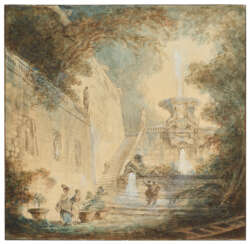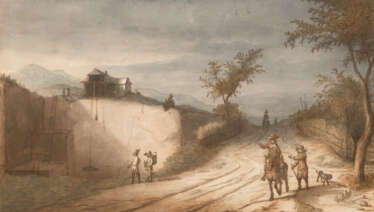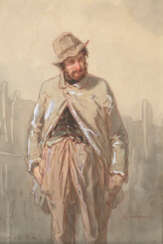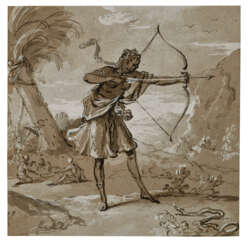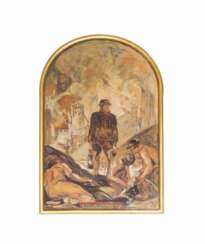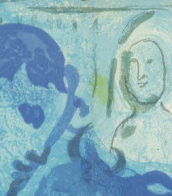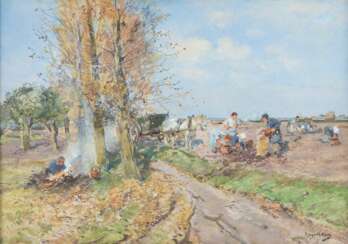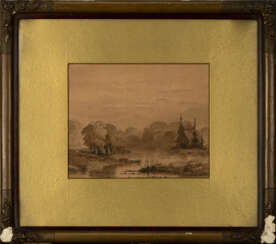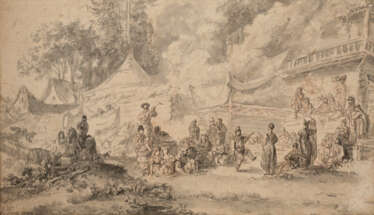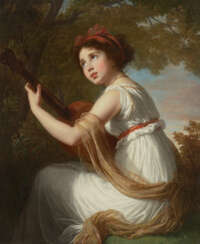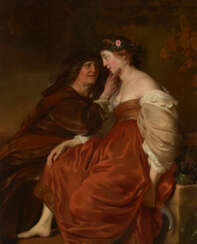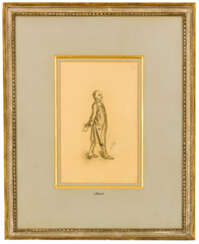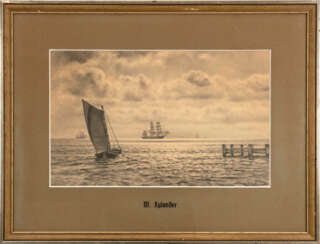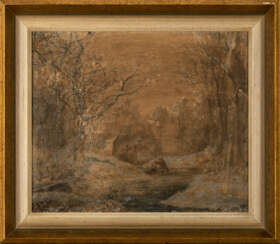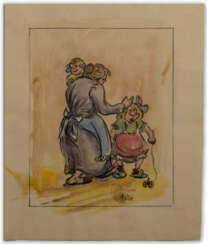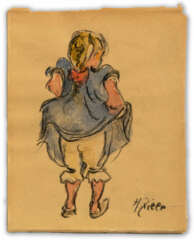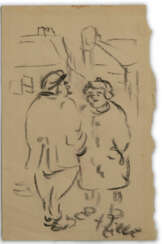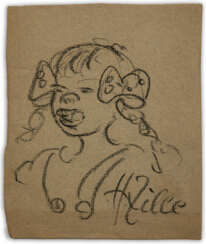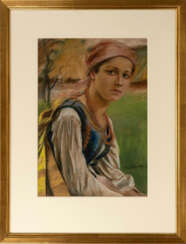aquarelles et dessins anciens
.jpg)
Hubert Robert was a renowned French artist, celebrated for his captivating landscape paintings and architectural fantasies. Born in Paris in 1733, Robert's talent was nurtured early on, thanks to the patronage of the Choiseul family. His journey to Rome in 1754 marked a pivotal phase in his career, where he immersed himself in studying ancient and modern Italian architecture, significantly influencing his artistic style.
Hubert Robert's work is characterized by its romantic depiction of ruins, blending fantasy with historical accuracy, which earned him the nickname "Robert des Ruines." His landscapes and capricci, which are imaginative compositions of architectural elements, resonated with the art collectors and the aristocracy of his time, securing his place as a key figure in French art history.
Noteworthy are Hubert Robert's contributions to the design of picturesque gardens, where he provided atmospheric visions rather than practical layouts. His involvement in the creation of gardens at places like Ermenonville and Méréville showcases his ability to merge art with nature, creating spaces that were both innovative and inspirational.
His artworks, such as "The Port of Rome" and "The Old Bridge," are treasured in prestigious galleries worldwide, reflecting his enduring legacy in the realm of art and culture. For art collectors and experts, Hubert Robert's oeuvre offers a window into the 18th-century artistic landscape, where imagination and historical elements coalesce to form compelling visual narratives.
For updates on exhibitions and auction events related to Hubert Robert's works, sign up to stay informed about new discoveries and opportunities to appreciate the artistry of this exceptional French painter.
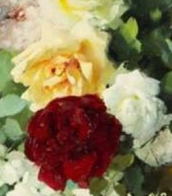
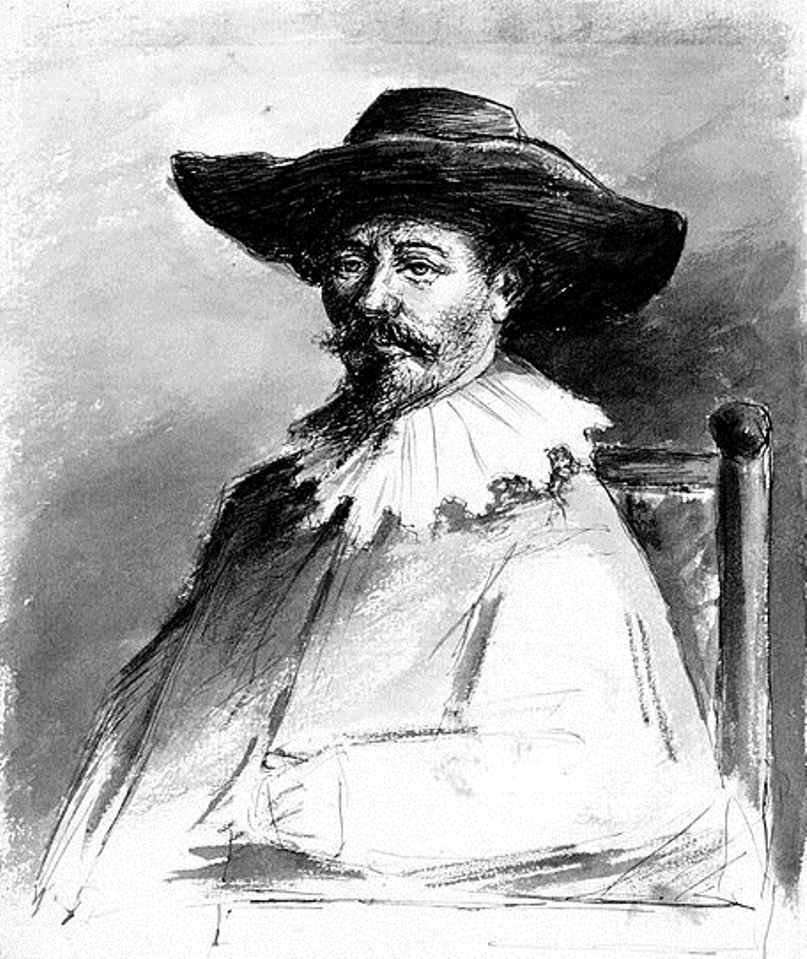

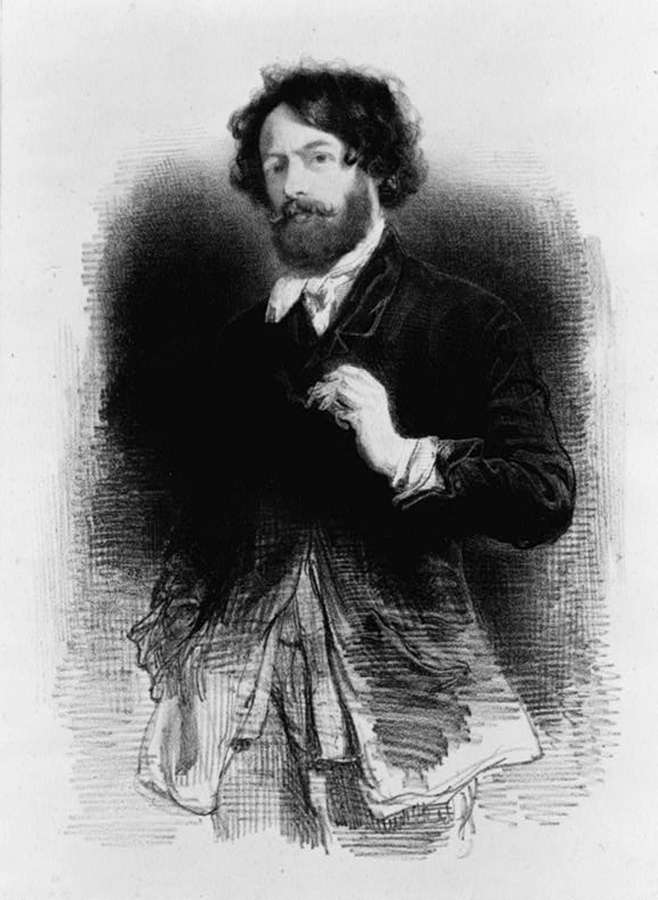
Paul Gavarni, real name Hippolyte Sulpice Guillaume Chevalier, was a French painter, cartoonist, illustrator, and a prominent 19th-century satirist.
Beginning his career as an assistant engineer, he showed signs of his future genius in the late 1820s as a fashion designer and illustrator. His talent for caricature and satirical art, however, led him to the editorship of Les Gens du Monde in 1835. Paul Gavarni, one of the smartest caricaturists, had no equal in drawing, capturing the follies and foibles of his time. He developed close friendships with many other leading artists and contemporary writers, including Honoré Balzac, Charles Dickens and William Maykpis Thackeray. His work was collected by Queen Victoria, as well as by Edgar Degas and Vincent van Gogh.
Gavarnie's long association with the popular magazine Le Charivari, with which Dumier and other cartoonists of the time also collaborated, was the pinnacle of his career. Working continuously from 1838 to 1844, he produced more than 900 engravings illustrating secular Parisian life with great wit, charm, and satire. He also illustrated the novels of Balzac and Eugène Sue and the short stories of Hoffmann. In addition to satirical works, Gavarni also distinguished himself in portraiture and sketches.
But it was not only in social circles that Gavarni revolved, where he was admired. In 1847 he spent a year in London, painting the inhabitants of the poor quarters around Whitechapel and producing some of his best work there.

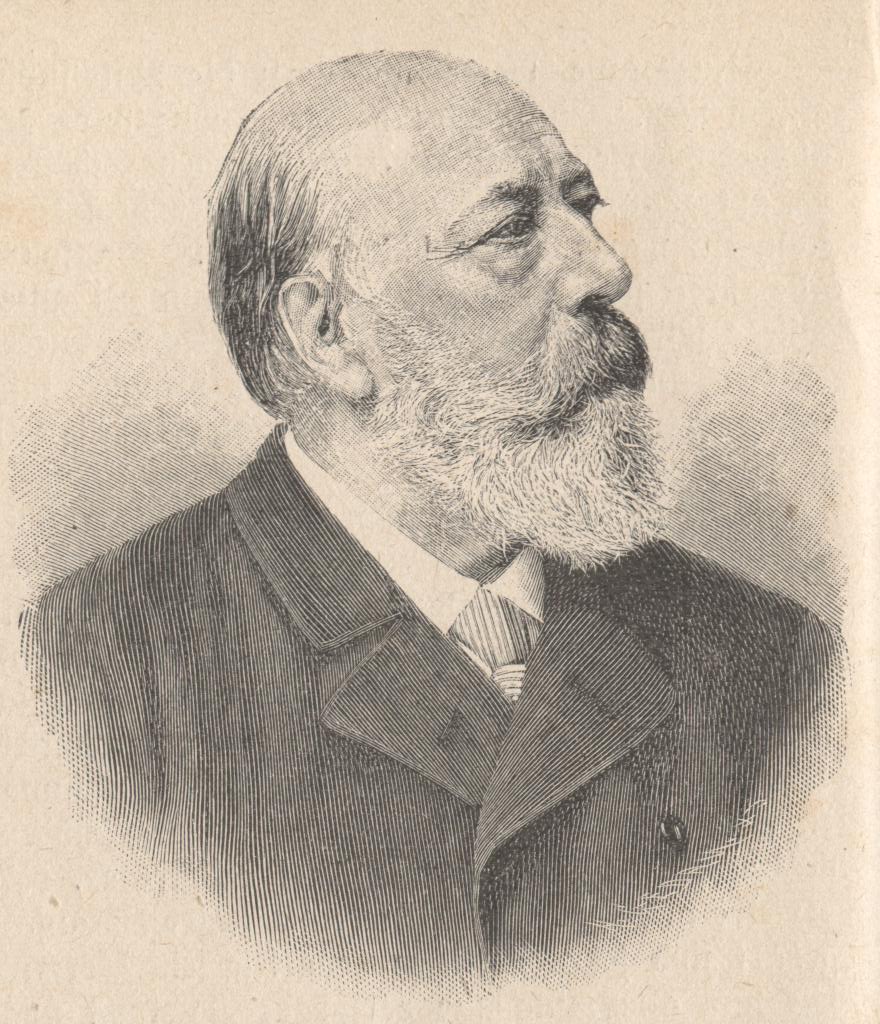
Andreas Achenbach was a German landscape and seascape painter in the Romantic style. He is considered to be one of the founders of the Düsseldorf School.[citation needed] His brother, Oswald, was also a well known landscape painter. Together, based on their initials, they were known as the "Alpha and Omega" of landscape painters.
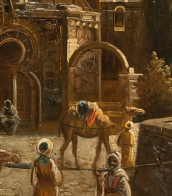
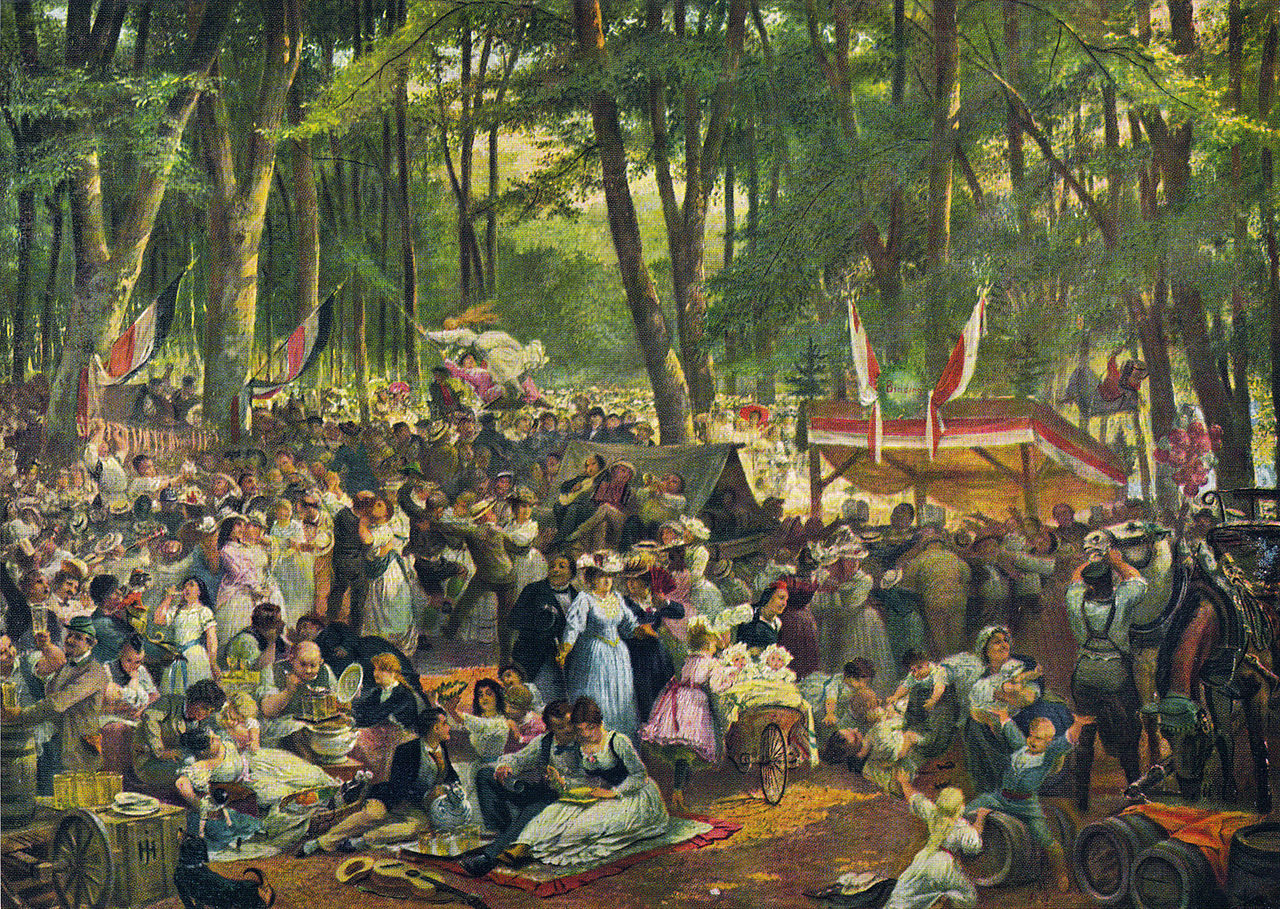
Johann Heinrich Hasselhorst was a German genre painter and drawing teacher.

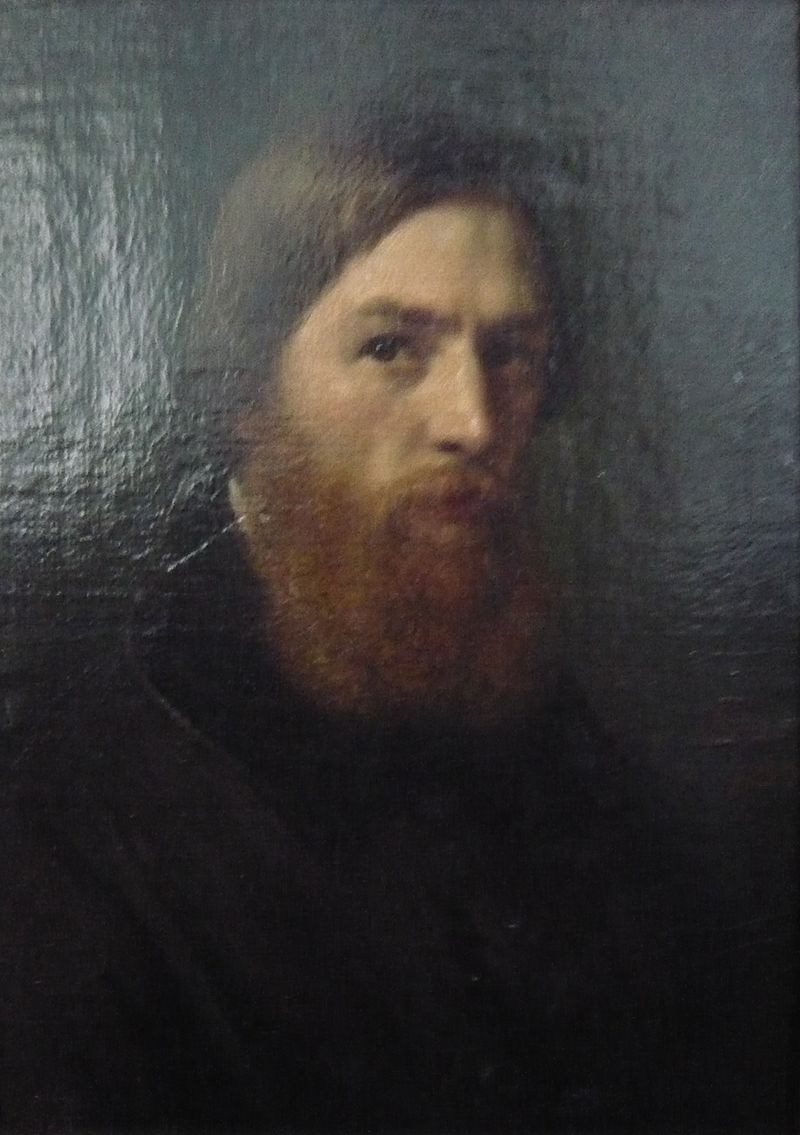
August Weber was a German landscape painter and lithographer of the Düsseldorf school of painting.
In the mid-19th century he became a member of the Malkasten association of progressive artists (Paintbox).
In addition to landscape painting, August Weber also created watercolors and lithographs.

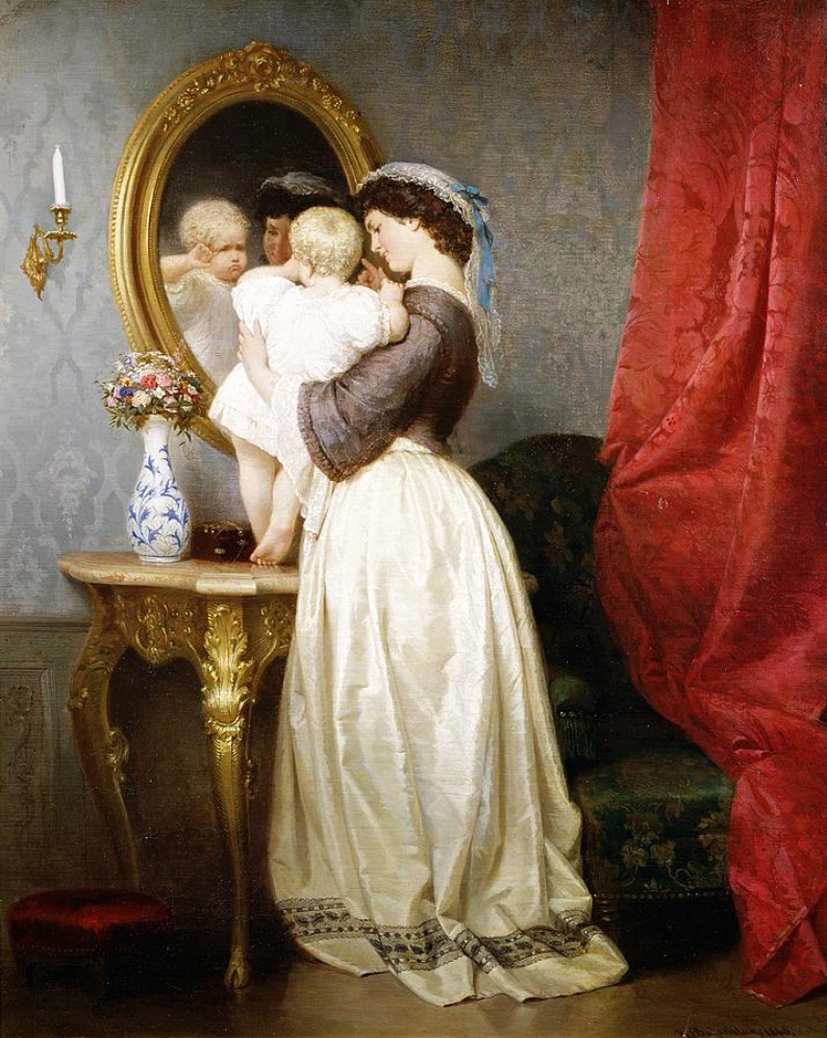
Robert Beyschlag was a German painter of the 19th century. He is known as a painter, famous for his paintings of mythological subjects and portraits of women.
Beyschlag early in his career created genre paintings depicting the medieval era, but later turned his attention to mythology, a prime example of which is the oft-repeated depiction of Psyche in his works. Inspired by Romanticism, the artist also created pastoral subjects with peasant women and shepherdesses. His work was characterized by optimism, theatricalization and idealization of characters, as well as rich colorism. He also created frescoes for the Bavarian National Museum in Munich, depicting scenes from the history of the Crusades.

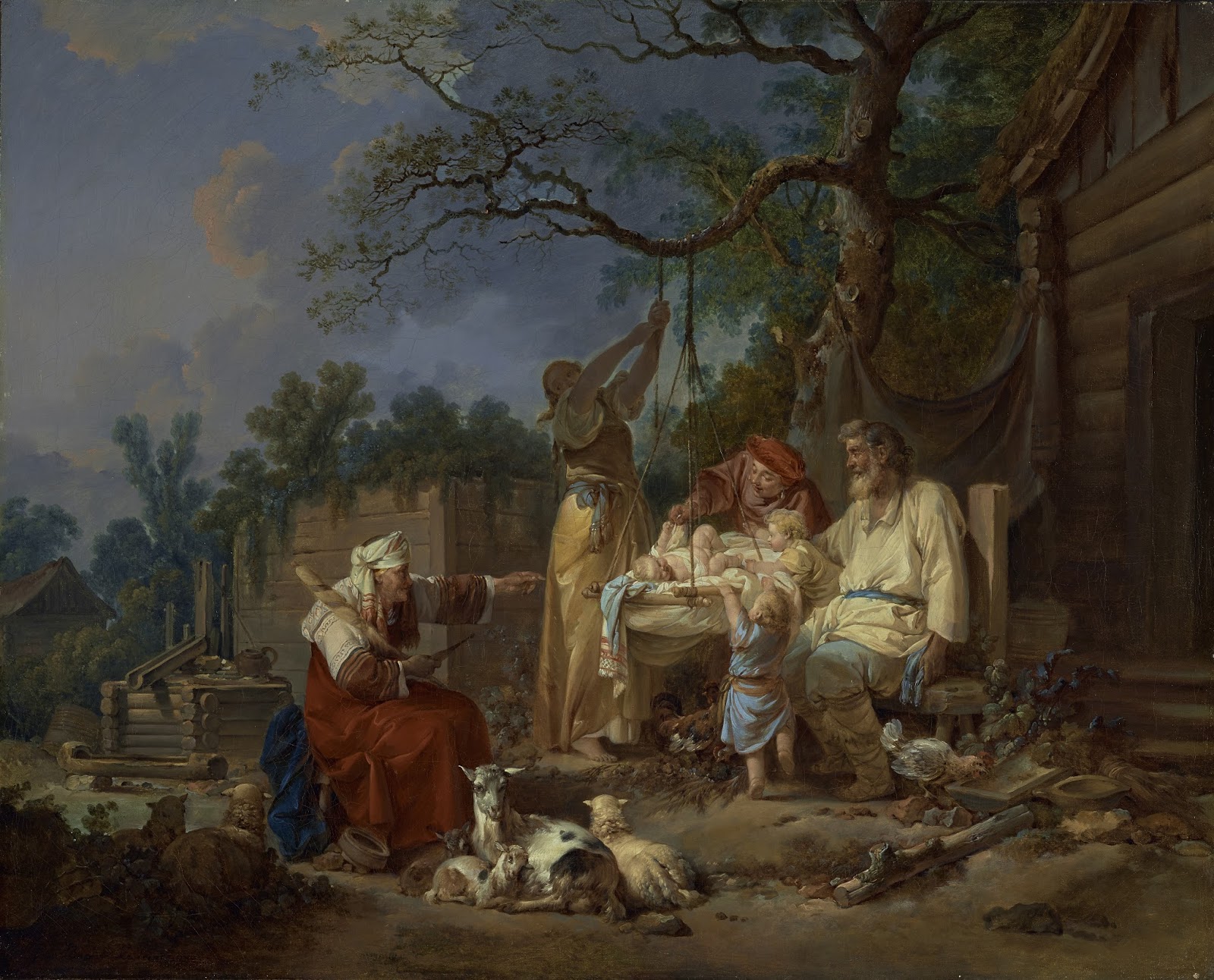
Jean-Baptiste Le Prince was an important French etcher and painter.


Elisabeth Vigee Le Brun was a celebrated French painter, renowned for her skill in portrait painting during the late 18th and early 19th centuries. Born in Paris in 1755, Vigee Le Brun's artistic talent was evident from a young age, leading her to become one of the most successful female artists of her time. Her father, a portraitist himself, was a significant influence on her early artistic development.
Vigee Le Brun is perhaps best known for her association with Queen Marie Antoinette. She painted more than 30 portraits of the queen, capturing her in a light that combined personal intimacy with the regal dignity required of royal portraiture. Her ability to portray her subjects with both elegance and psychological depth won her acclaim and patronage from the highest ranks of society across Europe.
Her career spanned one of Europe's most turbulent periods, including the French Revolution, which forced her into exile. During her years abroad, she lived and worked in major cultural centers such as Rome, Vienna, and St. Petersburg, further cementing her reputation among European aristocracy.
Vigee Le Brun's works are displayed in prestigious museums worldwide, including the Metropolitan Museum of Art in New York and the Louvre in Paris. Her legacy is not only in her portraits but also in her memoirs, which provide a vivid account of the cultural atmosphere of her time and her encounters with various historical figures.
For updates related to Elisabeth Vigee Le Brun, including new product sales and auction events featuring her work, consider signing up for updates. This subscription ensures you are informed about the latest developments and opportunities to appreciate or acquire works by this influential artist.
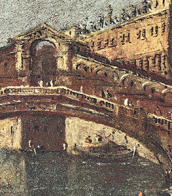
Adriaen Isenbrandt was a painter in Bruges, in the final years of Early Netherlandish painting, and the first of the Dutch and Flemish Renaissance painting of the Northern Renaissance. Documentary evidence suggests he was a significant and successful artist of his period, even though no specific works by his hand are clearly documented. Art historians have conjectured that he operated a large workshop specializing in religious subjects and devotional paintings, which were executed in a conservative style in the tradition of the Early Netherlandish painting of the previous century. By his time, the new booming economy of Antwerp had made this the centre of painting in the Low Countries, but the previous centre of Bruges retained considerable prestige.
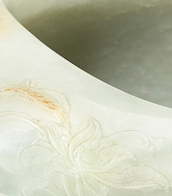
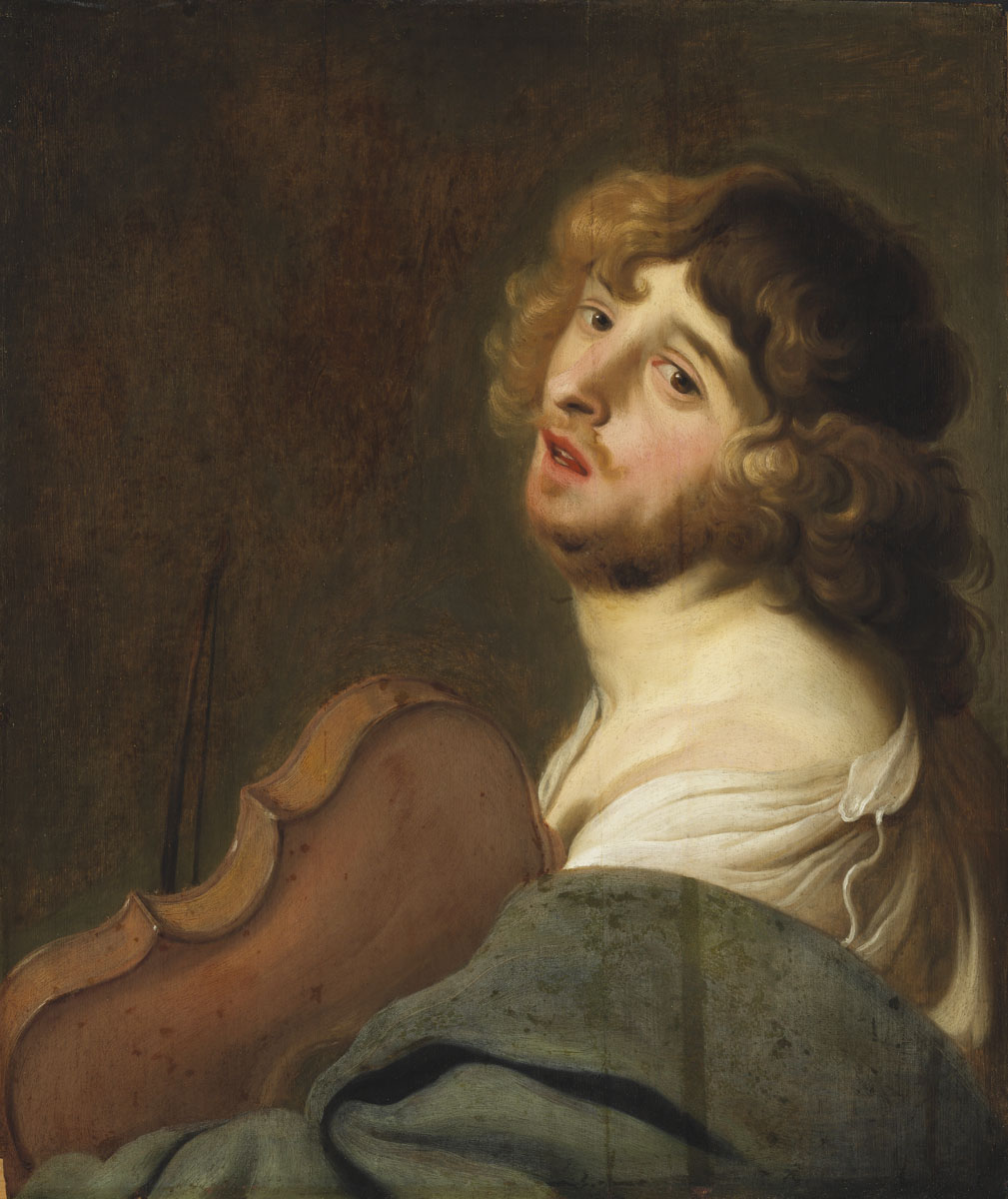
Jacob Adriaensz Backer was a prolific artist of the Dutch Golden Age, known for his dynamic portraits, religious subjects, and mythological scenes. Over a span of twenty years, Backer produced approximately 140 paintings, standing out for his quick execution and attention to detail. His ability to capture intricate details like cuffs, fur, and collars within a short period was renowned, exemplifying the Dutch wet-on-wet painting technique's success during his era.
Influenced by notable figures such as Wybrand de Geest, Peter Paul Rubens, and Abraham Bloemaert, Backer was also celebrated for his drawings of nudes, showcasing his versatile skill set. His works were a testament to the baroque movement, characterized by vivid expression and intricate detail. Notable among his works are portraits that convey the subject's essence with exceptional clarity and depth, earning him a distinguished place among his contemporaries in Amsterdam.
Despite his significant contributions to Dutch art, Backer led a life focused solely on his art, never marrying or purchasing a home, possibly sharing his living quarters with relatives. He was deeply embedded in the artistic milieu of Amsterdam, having been one of the most independent pupils of Rembrandt between 1632 and 1634, absorbing and reflecting the master's style in his works.
For collectors and experts in art and antiques, Jacob Adriaensz Backer's work offers an insight into the Dutch Golden Age's rich cultural and artistic landscape. His legacy continues to be celebrated in major museums and collections worldwide, including the Rijksmuseum in Amsterdam and the National Museum in Warsaw, where his influence on portrait and genre painting remains undisputed.
To stay updated on exhibitions, sales, and auctions related to Jacob Adriaensz Backer, subscribing to newsletters from reputable art galleries and auction houses is advisable. This ensures you receive timely information on opportunities to engage with the works of this masterful Dutch Golden Age painter.
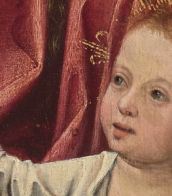
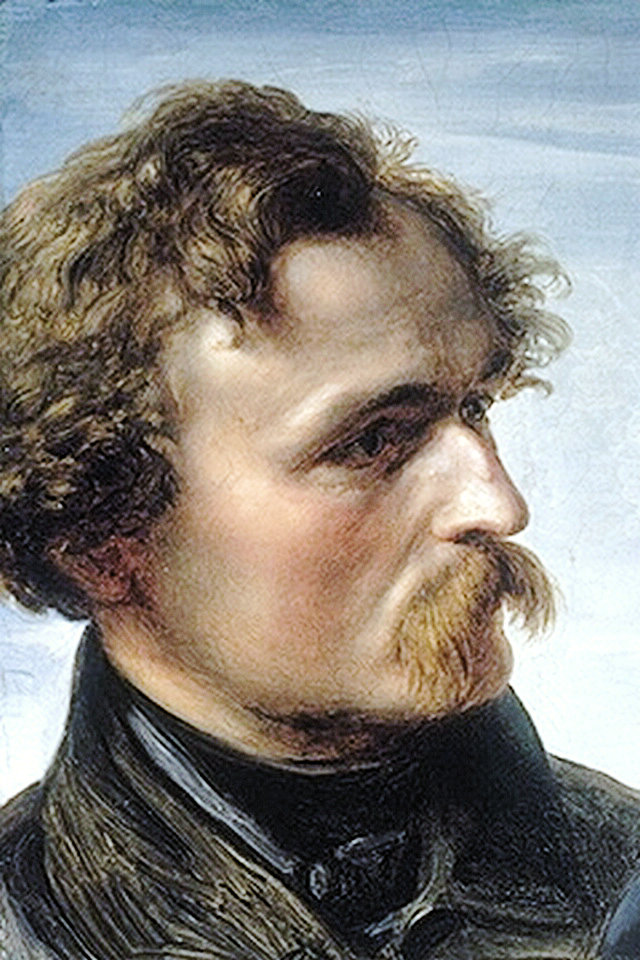
Karl Friedrich Lessing was a German painter of the mid-nineteenth century. He is known as a Romantic painter, a representative of the Düsseldorf School of painting.
Lessing began his career with melancholic-romantic landscapes and paintings on literary subjects. He later gained popularity as a landscape painter. Reproductions of his works were widely printed in German magazines of the XIX century. Later Lessing switched to historical subjects, creating historical paintings, as well as frescoes.
Lessing was a member of various art societies and academies, both German and foreign.

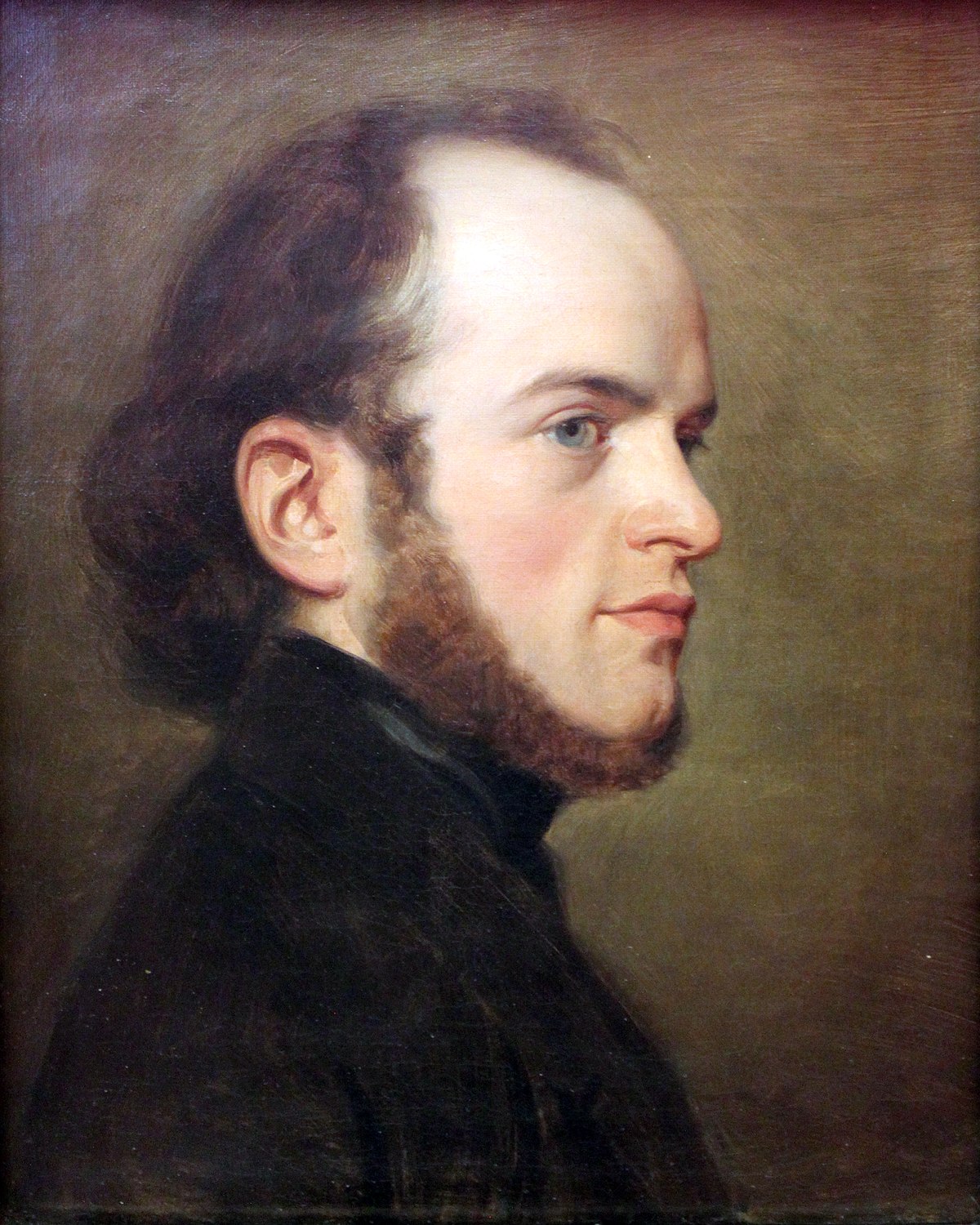
Adolph Friedrich Erdmann von Menzel was a German Realist artist noted for drawings, etchings, and paintings. Along with Caspar David Friedrich, he is considered one of the two most prominent German painters of the 19th century, and was the most successful artist of his era in Germany. First known as Adolph Menzel, he was knighted in 1898 and changed his name to Adolph von Menzel.
His popularity in his native country, owing especially to his history paintings, was such that few of his major paintings left Germany, as many were quickly acquired by museums in Berlin. Menzel's graphic work (and especially his drawings) were more widely disseminated; these, along with informal paintings not initially intended for display, have largely accounted for his posthumous reputation.

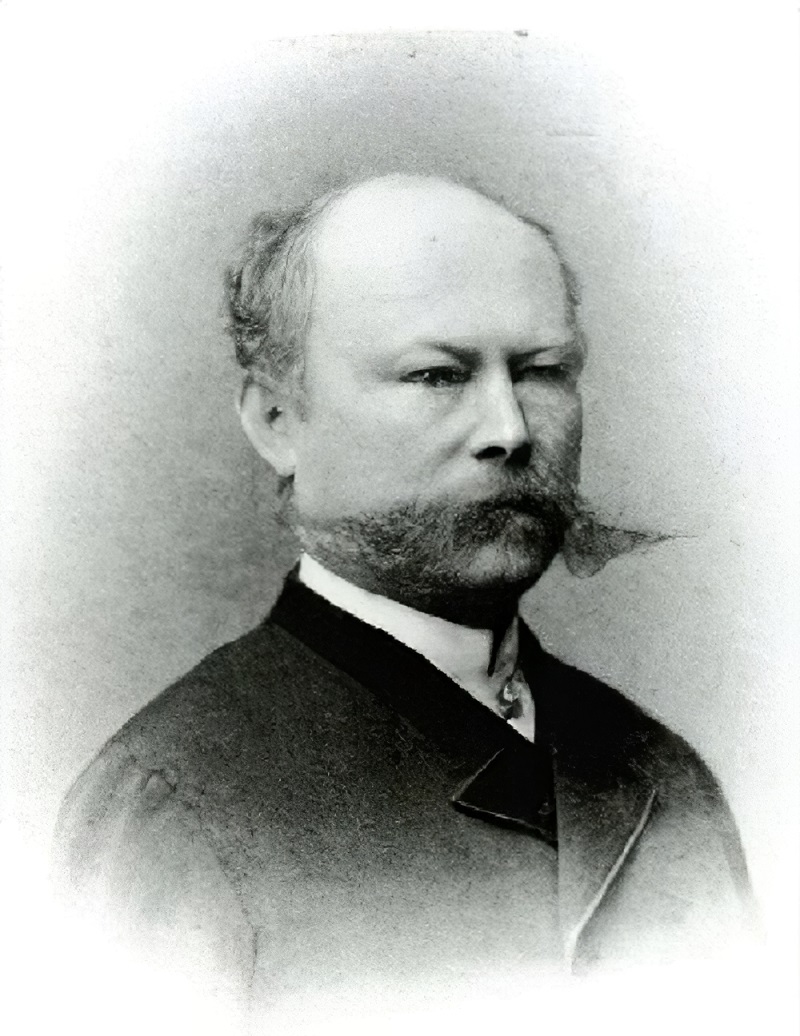
Ludvig Munthe was a Norwegian-born, German landscape painter.
Munthe is associated with the Düsseldorf school of painting. A thoroughly realistic treatment characterizes his paintings, of which autumn and winter scenes in stormy or gloomy weather, forest and coast views form the prevailing subjects.

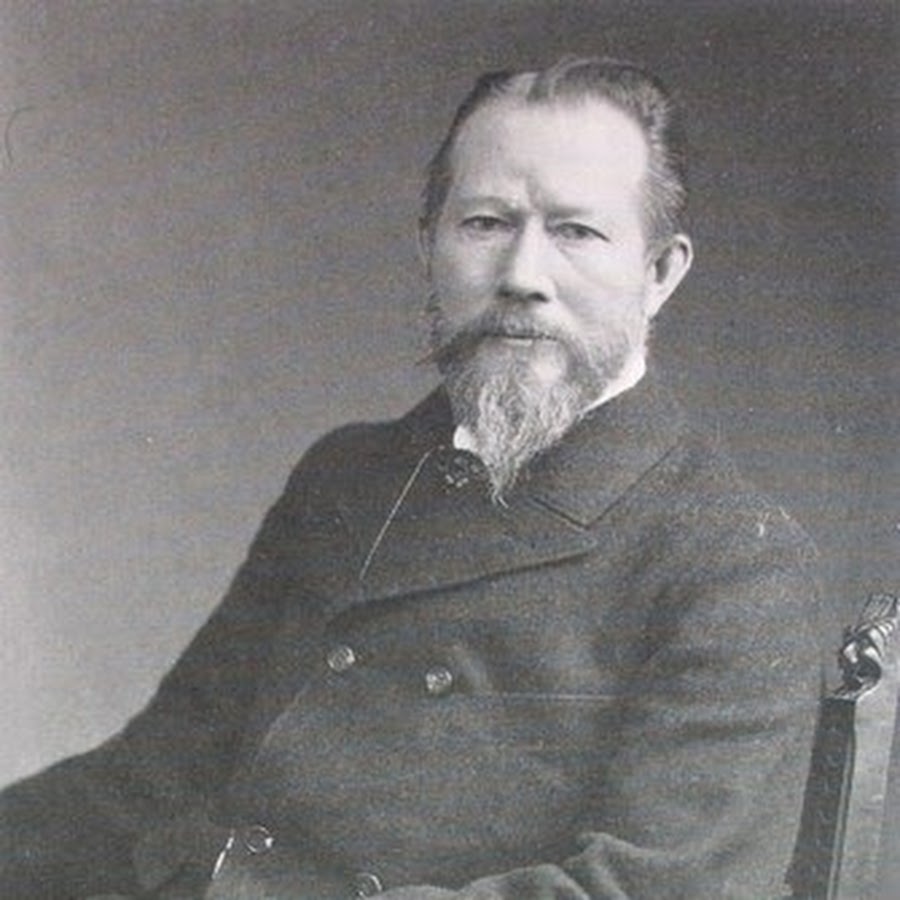
Eilert Adelsteen Normann was a Norwegian painter who worked in Berlin. He was a noted painter of landscapes of Norway. Normann was the artist who invited Edvard Munch to Berlin, where he painted The Scream. Normann's fjord paintings are credited with making the Norwegian fjords a more popular tourist destination.

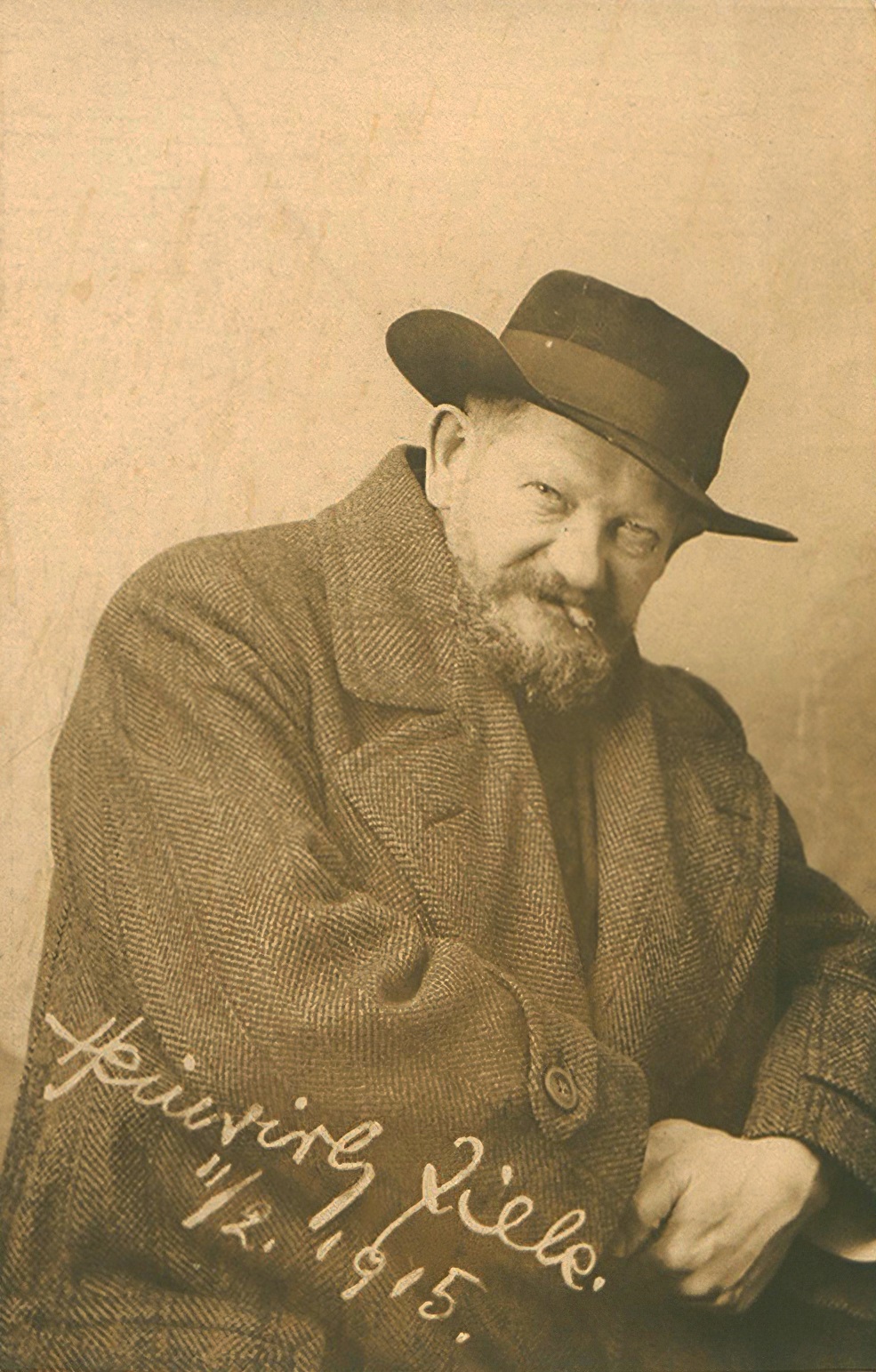
Heinrich Rudolf Zille was a German illustrator, caricaturist, lithographer and photographer.


Heinrich Rudolf Zille was a German illustrator, caricaturist, lithographer and photographer.


Heinrich Rudolf Zille was a German illustrator, caricaturist, lithographer and photographer.


Heinrich Rudolf Zille was a German illustrator, caricaturist, lithographer and photographer.

